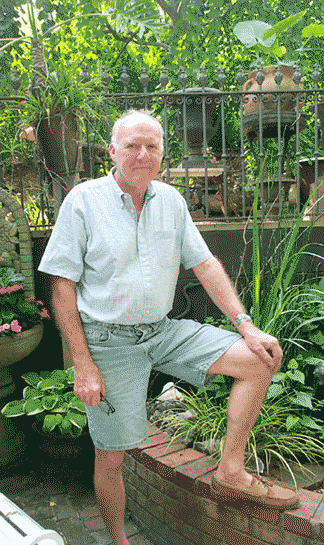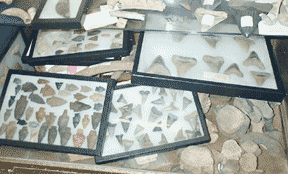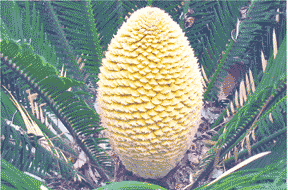Knowing What to Hold onto and When to Let Go
On — and off — the job with antiques collector Dale Thomas
Story & Photos by Michelle Steel, Bay Weekly Contributor
You think you know where Dale Thomas fits in this world. Six days a week for 37 years — despite his supposed retirement — he’s manned the counter, or occupied his faded wingback with a handmade quilt strewn across the top, at Nice & Fleazy in North Beach, selling “everything from fossils to fine art.”
By night, a different Thomas escapes seven miles and 17 minutes south to his home and private paradise in the Calvert County Bayfront community called The Willows.
In With the Old, Out With the New
Enter Nice & Fleazy and your senses rebound from the musty smell to seeing your own reflection smile back at you from a silver spoon. You sink into the plush feel of soft velvet of a wingback chair and feel the smooth warmth of mahogany when you run your fingers down a hand-carved cane or across the ivory keys of a piano. You delicately finger the fragile lace of a handkerchief, with its see-through fabric after years of use, and wonder who sewed it and how long her sewing took.
Aisles of antiques are organized by designated sections. There are areas specifically for clocks, silverware, fossils, jewelry, toys, dolls, linens and trinkets, just to name a few.
Today’s special is a finely polished silver ladle with a mirror reflection.
“Something to be proud of as you dip grandma’s gravy onto her mashed potatoes at Thanksgiving,” beams Thomas, 74.
Its price: $150. Not an amount I’m willing to dish out for a ladle used once a year.
The what’s it of the day attracts attention as customers ponder whether a pewter object — it resembles scissors with rounded balls at the end rather than tips or blades — is an egg boiler/remover, ice cream scooper or melon ball scooper. The verdict: egg boiler.
After a purchase, Thomas sometimes throws in an on the house of the day. My son gets a free compass with his purchased antique letter opener and pair of dice.
Antiquing is a unique kind of shopping because you can browse, trade and barter. Unique in merchandise, as well. Where else can you buy something not from this planet like a piece of meteorite that fell to earth in Arizona, a fossilized elephant tusk more than 15 million years old, a shark’s tooth with seaweed still attached or a fur coat and pair of skis in July? Or visit with customers and shop owners, sometimes for hours at a time?
Holidays and tax-refund time remain the busiest days for Thomas, who can teach you about fossils and fill you in on the history of most of the antiques lining the walls and adorning the cases at Nice & Fleazy.
For Thomas, antiques bring customers.
“The customers are my incentive to keep going,” he says.
Antiques are a way of making a living with little commute. His home of 39 years is the reason that 37 years ago, he left his job in D.C. as a senate staffer after 12 years.
At Home
Home — his tropical, antique retreat with classical music in the background — is the other half, the hidden half, of the best-known man in North Beach.
To win his trust and hear his story, you must first fly on his swing.
The swing, a single wooden board, hangs by twin ropes from a tulip poplar. At the highest point in The Willows, the swing separates the courageous from the cowards. You glide out and over a ravine and Calvert’s cliffs. With the Bay glimmering beneath your toes, you soar above nature like a bird.
I flew and passed the test.
Paran is what Thomas calls his home and the vast plot of land surrounding it. In the biblical book of Deuteronomy, Paran is defined as digging and searching. According to Thomas, people are constantly digging and searching for an answer to life. In Paran, he has found an answer and a peaceful refuge.
Enter through the rustic wrought-iron gate into fossils, fauna, fowl and feathers. Like his shop, his home is a sensory experience grounded in the past. Both are void of clutter, and everything has a place. Step inside his parlor, then sit back and listen as one of his grandfather clocks soothes you with its brass chimes. Admire the rugged, wooden beams supporting the roof, the Oriental rugs covering the floors and the framed arrowheads, gathered in Oregon by Thomas and his father. Walk outside past the greenhouse and peer inside a miniature home equipped with a bedroom loft, inviting guests for sleepovers.
As well as an antique collector, Thomas is a gardener and aviculturist.
Sharing Paran with a peacock and peahen, two swans, a pair of mille fleur bantams, 17 guineas, a 20-something-year-old alley cat named Advent and a weekend human, Harley Cupp, Thomas never lacks company. He searches for answers through his animals and parallels their lives with his own.
The peacocks follow Thomas around and seem to sense his moods. “They are quite intelligent and understanding,” says Thomas, who took up raising peacocks in 1986. They also mow the lawn and eat pesky insects. Otherwise the docile, inquisitive and non-aggressive birds are content dusting themselves off in an ash pile, perching in a pine tree or tulip poplar or visiting the neighbors.
The peahen sits on her eggs atop a green A-frame house closely resembling Thomas’. It’s her second clutch; the first hatchlings became prey: black snakes covet them.
“They make a lot of racket,” says Thomas, though he insists they are noisiest from February through June and quiet for the rest of the year.
June is when the peacock molts his train. By Thanksgiving, it’s back again. “His job is to look splendiferous,” says Thomas.
Looking splendiferous appears to be his only job when the peahen is busy watching over her eggs.
From peafowl, Thomas has branched out. A pair of swans swim in a water-filled satellite dish retrieved from the roof of Dulles airport when it was first built. The male, called a cob, dines on figs but has no gratitude for the hand that feeds him. The 17 high-energy guineas are housed indoors at a constant 90-degree temperature. The pair of speckled, bearded mille fleur sport the most elaborate feather combination in the bantam world.
Fowl are Thomas’ own hobby; gardening he inherited. Back in Oregon, his father was a farmer. His own garden, however, tends to the splendiferous. The two-tiered double decks display ice-cream tables for two. Scattered over the grounds are a bathtub and huge pots — as well as the satellite dish of water for thirsty birds; trickling fountains; ancient gargoyles; and a whaling-ship weight that doubles as a bench: not things you’d find in your own backyard. Plants and trees prevail. The foliage yields to a 360-degree view of the Bay.
His prize plant is a sago palm that arrived in a Dixie cup 25 years ago. It has outgrown Thomas; he and Cupp can barely budge it. This year it bloomed for the first time, producing a bright yellow, rubbery fruit resembling a pineapple.
The Wisdom of Dale
Taking life in stride, enjoying a slower pace and accepting what comes your way are tenets of Thomas’s philosophy. So is letting go of what comes your way. “Energy and attachment play on each other and are interchangeable,” he says. “If you feel too attached to an object, you lose focus of your energy.”
The remedy is letting go of the object. It works for a collector — and seller — of objects other people have let go.
When summer ends, Thomas opens his home to seekers for a series of 10 spiritual discussions that he calls The Art of Deliberate Creation. “We talk about how to remove obstacles in order to feel good in your life at all times,” Thomas explains.
Join him. Or wait until his sixth and final North Beach House and Garden tour next June — or maybe the year after.
|
